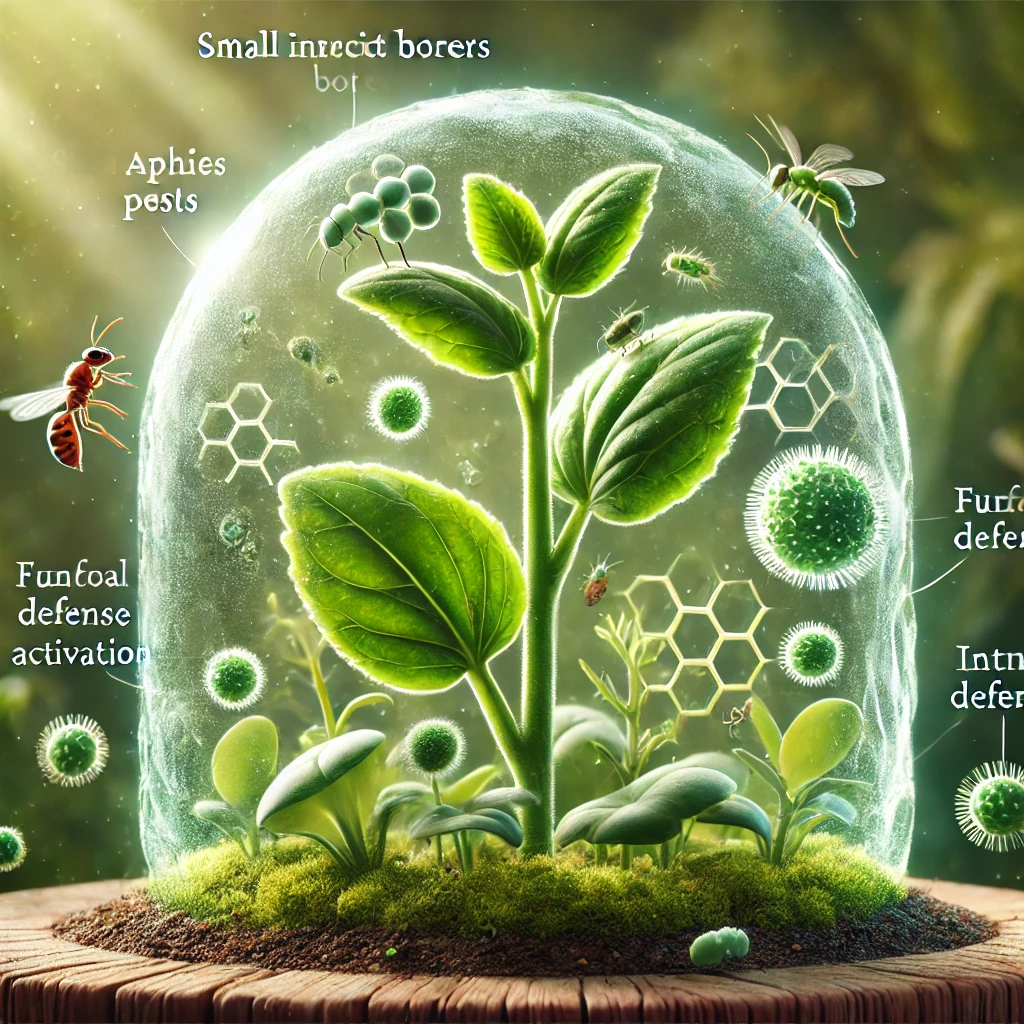
Conventionally the plant protection strategy relied heavily on the following:
Pesticides / insecticides / fungicides to protect the plants from insects feeding on them. The formulation may be made from synthetic molecules or from naturally derived sources like Neem, Karanj, Anona etc., or using bio-toxins from bacteria & fungus. Their mode of action can be systemic or contact. Contact pesticide directly comes in contact with the pest and kills it. Systemic ones remain in the plant system for a certain duration (typically 7-20 days). If the pest feeds on the plant sap, it gets killed.
Thus, the primary role is to KILL.
Regular uses of synthetic pesticides result into mutant insects evolving therein. Thus, the need for regular evolution of new molecules. Some of them were highly toxic for both the pests & humans. In fact, most of them also induces certain level of stress in the plants.
Comparatively the natural pesticides or microbial products are safer option and don’t develop resistance quickly.
However, they react to the pest attack. Most of them respond to specific pests. Thus, multiple attacks can lead to mix of pesticides to be used together.
Silica brings in totally new dimension to plant protection in multiple ways:
1. Physical Protection :
Silica once absorbed by the plant is deposited in the outermost layer of the tissue (epidermis) making a solid structure and a rigid barrier called Phytoliths. Most Si is cross linked with hemicellulose in cell walls, which improves mechanical properties and regeneration. Si contributes not only to cell wall rigidity, Si also interacts with cell-wall constituents such as pectin and polyphenols, which increase cell wall elasticity during extension growth.
This provides a strong defence system during biotic stress [pests & pathogens]. The attacking pests tries to eat the tissue [biting], suck the fluid [piercing], or burrow inside [boring]. The strong & rigid silica wall resists the attempt to puncture the wall and also damages the teeth/stings of the infesting pests for effective protection. Naturally this reduces the food intake, growth longevity, and fecundity and population growth of pests.
The Silica Wall also blocks the fungi from reaching the tissues making them less susceptible to enzymatic degradation from caused by pathogens. Apart from that further accumulation of Silica is found in the fungus sites increasing the resistance to pathogen invasion.
2. Biochemical activation.
bSi plays a big role in also activating the bio-chemical defence system to improve plant resistance to disease caused by fungi, bacteria, viruses, and nematodes. Activation of Defence-related enzymes and antimicrobial compounds are closely linked with disease resistance. Many studies has indicated that bSi activates the accumulation of enzymes like chitinase, peroxidases, polyphenol oxidases, β-1,3-glucanase, phenylalanine ammonia-lyase, dismutase, ascorbate peroxidase, glutathione reductase, catalase, lipoxygenase, and many more, which induce the production and accumulation of antimicrobial compounds such as phenols, flavonoids, phytoalexins, and PR proteins in plants after pathogen penetration.
3. Desiccant mode
Silica is highly abrasive. In dry form it cuts the eko-skeleton of the pest and sucks the moisture out. Thus the pest / pathogen is physically destroyed.
4. Abiotic Stress response
It has been widely reported that Si is able to suppress abiotic physical stress, such as drought, high/low temperatures, typhoons, inadequate sunshine, UV etc. The strong cell wall are better at managing water balance inside the cells. Under physical stress the cells are able to maintain their structure for a longer duration and plants does not droop easily maintaining the structural integrity for a longer duration. It has also been found that Biogenic silica helps plant fight salinity, nutrient imbalance, and metal-toxicity.
As is understood the whole mode of working works on:
That’s the reason Silpot (Silica supplement from Mitrasena) is so highly recommended by Mitrasena in all the crops. It should be a part of every farmer’s kit for every crop.
There was this interesting discussion I had with Mr Prateek
The teaser of Self Running Soil Revolution for an investment
The effectiveness of any microbial product depends not just on
Mitrasena (Army of friends) is global brand of Biowall Agrihealth Pvt Ltd. Mitrasena products & protocols enables seamless transition to non-toxic farming by concurrently offering Excellent Protection, Higher Productivity & Profit and, Ease of use.
We are a DIPP recognized Startup working for non-toxic crop protection. We are driven by a highly passionate and professionally competent team.
MitraSena © 2025 | All rights reserved | Innovatively Designed and Built by Social Mukul Media
Have any query about bulk orders? Get in touch with us.